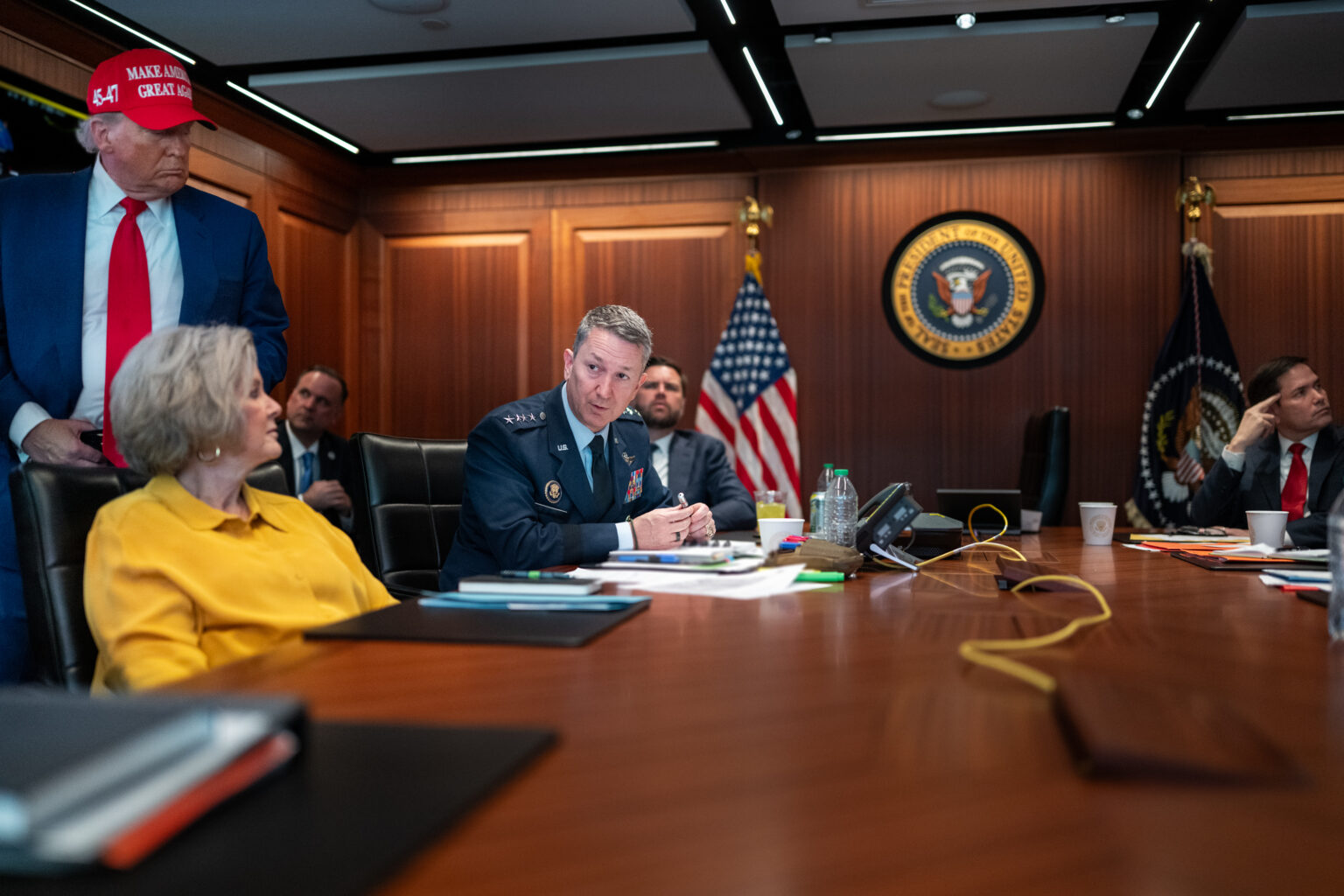Inside the White House: A Closer Look at the Recent Military Action and Leadership Dynamics
Following President Donald Trump’s initiation of a significant military operation on Iranian territory-the first such strike since the 1979 overthrow of the U.S.-supported Shah-the White House released a series of photographs capturing the momentous event. These images, published late Saturday, depict the President and his top advisors gathered in the secure confines of the Situation Room, a space dedicated to high-stakes decision-making and classified discussions.
Visual Documentation of Critical National Security Meetings
The photographs were taken within the windowless, highly secure environment where sensitive operations are planned and overseen. In the images, President Trump is seen wearing a MAGA hat, seated at the head of the table, flanked by key figures including White House Chief of Staff Susie Wiles, CIA Director John Ratcliffe, and Defense Secretary Pete Hegseth. The images quickly gained widespread attention, with nearly 10 million views on the social media platform X (formerly Twitter).
It is important to note that these images have been digitally modified, likely to conceal classified or sensitive information. The Associated Press reported that some documents visible on the table have been intentionally blurred, a common practice in official Situation Room photographs. Historically, such images are rarely available to the public, as they are typically kept under strict confidentiality to protect national security interests.
Historical Parallels: The Power of Official Photographs
Similar images from 2011, when President Barack Obama and his team monitored the operation that resulted in the death of Osama bin Laden, have become iconic symbols of presidential leadership. Those photographs also featured blurred documents, emphasizing the sensitive nature of the discussions. Such images serve as visual milestones, illustrating moments of decisive action in U.S. history.
Shifts in White House Personnel and Public Perception
Interestingly, the recent photos did not include Tulsi Gabbard, who has been serving as an intelligence advisor. Her absence from the images has sparked speculation about her current standing within the administration. However, on Sunday evening, a White House social media account posted a different image of Gabbard, dated June 21, 2025, captioned “President Trump’s intelligence team in the White House Situation Room,” suggesting her continued involvement in intelligence matters.
Gabbard’s relationship with President Trump appears to have cooled recently. After being appointed to coordinate U.S. intelligence agencies, she has publicly expressed concerns about Iran’s nuclear ambitions. In March, she testified before Congress, aligning with U.S. intelligence assessments that Iran was actively pursuing nuclear capabilities but had not yet decided to develop a nuclear weapon. Nonetheless, Trump publicly challenged her judgment, asserting on Friday that her assessment was “wrong,” and dismissing her opinions as inaccurate.
Current Context and Broader Implications
This episode underscores the ongoing complexities of U.S. foreign policy and internal leadership dynamics. The administration’s handling of Iran, a nation with a long history of tense relations with the U.S., continues to be a focal point of national security debates. Recent military actions and the accompanying imagery serve as a reminder of the high-stakes decisions made at the highest levels of government, often under intense scrutiny and with significant geopolitical repercussions.
As the situation evolves, analysts and observers will be watching closely to see how internal disagreements and personnel shifts influence the administration’s approach to Iran and other critical issues. The strategic use of official imagery remains a powerful tool in shaping public perception and conveying messages of strength and decisiveness in times of international tension.

